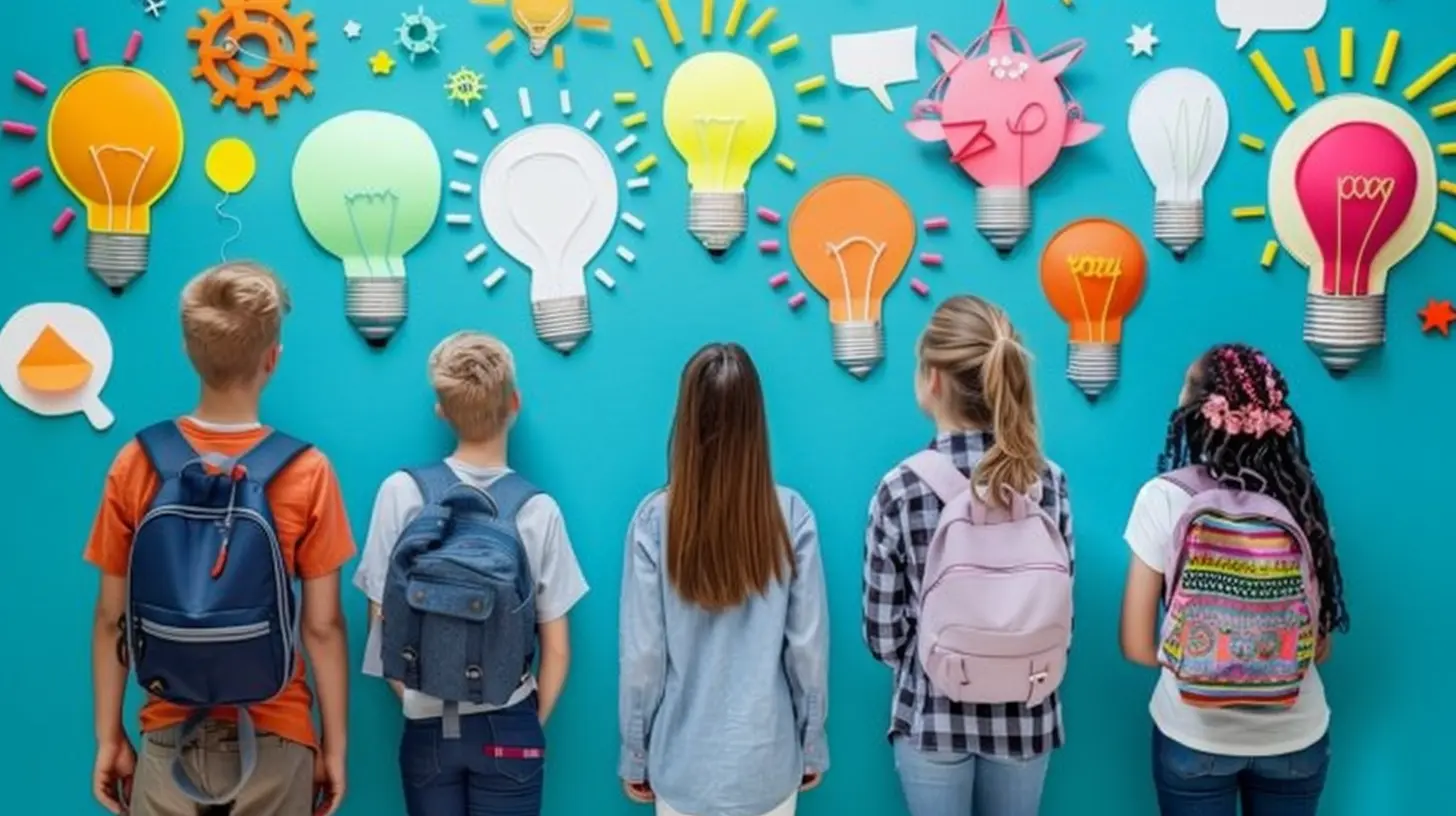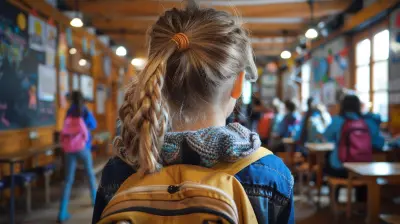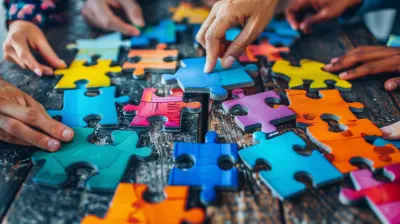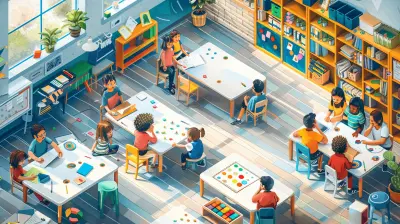19 March 2025
In today’s fast-paced, interconnected world, the traditional methods of teaching—where students sit passively and listen to their teacher—are slowly giving way to more collaborative, active learning environments. One such method that’s gaining traction is peer learning. You’ve probably experienced it yourself—those group projects where you work with your classmates to solve problems, discuss ideas, or create something together. But did you know that this student-led approach has a whole host of benefits that go beyond just dividing the workload?
In this article, we’re going to unpack the value of peer learning, particularly in the form of student-led group work. We’ll explore why it’s becoming a popular teaching strategy, how it benefits students in ways you might not expect, and how you can make the most of it in your own educational journey.

What is Peer Learning?
Before we dive into the nitty-gritty, let’s start at the beginning: What exactly is peer learning? Simply put, peer learning is a process where students learn from and with each other. It’s not just about sharing answers or working on the same project; it’s a collaborative approach to learning where students contribute equally.Think of it like a group of friends trying to solve a puzzle. Everyone brings their own perspectives, skills, and ideas to the table. Some might see the big picture, while others focus on the tiny details. By working together, they’re able to solve the puzzle faster and more effectively than if they worked alone.
Forms of Peer Learning
Peer learning can take many shapes and forms. Here are a few common examples:- Group projects: Students work together to complete a task or project, often dividing roles and responsibilities.
- Peer tutoring: One student teaches another, often in a one-on-one setting.
- Discussion groups: Students come together to discuss a topic, sharing their own experiences and insights.
- Collaborative problem-solving: Students tackle problems as a team, brainstorming solutions and working through challenges together.
What makes peer learning different from traditional learning models is that the teacher steps back and allows students to take the lead. The teacher becomes more of a facilitator, guiding the process rather than dictating it.

Why Peer Learning Matters
Now, you might be wondering, "Why bother with peer learning? Can’t I just learn everything from the teacher?" Well, yes and no. Teachers play an essential role in education, but learning isn’t a one-size-fits-all process. Peer learning adds a whole new layer to the experience. Let’s break down why it matters so much.1. Enhances Understanding Through Explanation
Have you ever tried to explain something to a friend and realized halfway through that you didn’t understand it as well as you thought? That’s because teaching someone else forces you to clarify your thoughts, organize your knowledge, and fill in any gaps in your understanding.When students explain concepts to their peers, it reinforces their own learning. It’s like the saying goes: "If you can’t explain it simply, you don’t understand it well enough." Peer learning provides plenty of opportunities for students to teach each other, which deepens their comprehension of the material.
2. Promotes Active Learning
In a traditional classroom setting, students often sit back and passively absorb information. But in peer learning, students are actively engaged in the learning process. They’re asking questions, discussing ideas, debating different viewpoints, and solving problems together.This kind of active engagement leads to better retention of information. Studies have shown that students who participate in peer learning are more likely to remember what they’ve learned compared to those who only listen to lectures.
3. Develops Critical Thinking and Problem-Solving Skills
When students work together in a group, they’re often faced with complex problems that require critical thinking. They have to analyze the situation, weigh different options, and come up with a solution. And because they’re working with others, they’re exposed to different perspectives and ways of thinking.This kind of collaborative problem-solving helps students develop important skills that they’ll need in the real world. It’s no longer just about getting the right answer—it’s about understanding the process and learning how to think critically.
4. Builds Communication and Social Skills
Let’s be honest—working in a group isn’t always easy. There are different personalities, opinions, and approaches to manage. But that’s exactly why peer learning is so valuable. It forces students to communicate effectively, listen to each other, and find ways to compromise.These social and communication skills are critical, not just for school but for life in general. Whether you’re working on a team at your future job or negotiating with a roommate, the ability to collaborate and communicate is key.
5. Encourages Responsibility and Ownership of Learning
In a peer learning environment, students aren’t just passive participants—they’re active contributors. They have to take responsibility for their own learning as well as the learning of their peers. This sense of ownership can be incredibly empowering and motivating.When students feel responsible for their group’s success, they’re more likely to stay engaged, put in the effort, and take pride in their work. Plus, peer learning fosters a sense of accountability. If you don’t pull your weight, it doesn’t just affect you—it affects the whole group.

Overcoming Common Challenges of Peer Learning
Of course, like anything in education, peer learning isn’t without its challenges. But the good news is that with a little effort and the right strategies, these challenges can be overcome.1. Uneven Participation
One of the most common issues with group work is that some students end up doing more work than others. This can lead to frustration and resentment, and it can prevent the group from functioning effectively.Solution: Set clear expectations from the beginning. Assign roles or responsibilities to each member of the group, so everyone knows what they’re supposed to contribute. You can also use peer evaluations to hold each other accountable.
2. Conflicting Personalities
Let’s face it—sometimes you’re just not going to get along with everyone in your group. Different personalities, communication styles, and work habits can lead to conflict.Solution: Encourage open communication and active listening. It’s important to create an environment where everyone feels comfortable expressing their opinions. If conflict arises, try to address it early before it escalates.
3. Lack of Structure
Without proper guidance, peer learning can sometimes feel chaotic or unfocused. Students might not know where to start or what they’re supposed to be doing.Solution: Provide a clear framework or set of guidelines for the group to follow. While it’s important for students to take the lead, having some structure can help keep them on track.

How to Make the Most of Peer Learning
Now that we’ve covered the benefits and challenges, let’s talk about how you can make the most of peer learning in your own education. Here are a few tips to help you get started:1. Be an Active Participant
Don’t just sit back and let others do the work. Get involved, contribute your ideas, and take ownership of your learning. The more engaged you are, the more you’ll get out of the experience.2. Ask Questions
If you’re not sure about something, don’t be afraid to ask. Chances are, if you’re confused, someone else in the group is too. Asking questions can spark discussions and lead to a deeper understanding of the material.3. Be Open to Different Perspectives
One of the great things about peer learning is that it exposes you to different viewpoints. Even if you don’t agree with someone, try to listen to their perspective and consider how it might broaden your understanding of the topic.4. Stay Organized
Group work can get messy if you’re not organized. Keep track of deadlines, divide tasks evenly, and communicate regularly with your group members. Tools like shared calendars or project management apps can be really helpful.5. Reflect on the Experience
After the group work is over, take some time to reflect on what you’ve learned. What went well? What could have gone better? How can you apply these lessons to future group projects?Conclusion
Peer learning, especially in the form of student-led group work, is a powerful educational tool that offers a wide range of benefits. From enhancing understanding to building essential life skills, it’s clear that learning from and with your peers can be a game-changer.By taking an active role in the learning process, students not only deepen their knowledge but also develop critical thinking, communication, and collaboration skills that will serve them long after they’ve left the classroom. So the next time you’re assigned a group project, don’t groan—embrace the opportunity. You might just learn more than you expected.








Vanessa Stewart
Peer learning fosters collaboration and enhances critical thinking skills, empowering students to take ownership of their education. Through student-led group work, individuals gain diverse perspectives, build communication skills, and deepen understanding of complex concepts, ultimately preparing them for real-world challenges in a dynamic learning environment.
April 2, 2025 at 11:26 AM